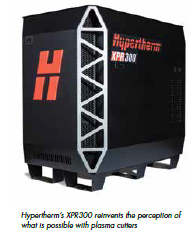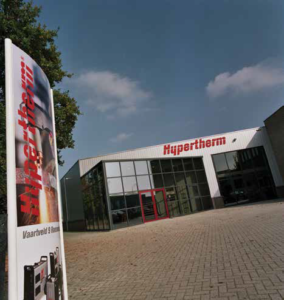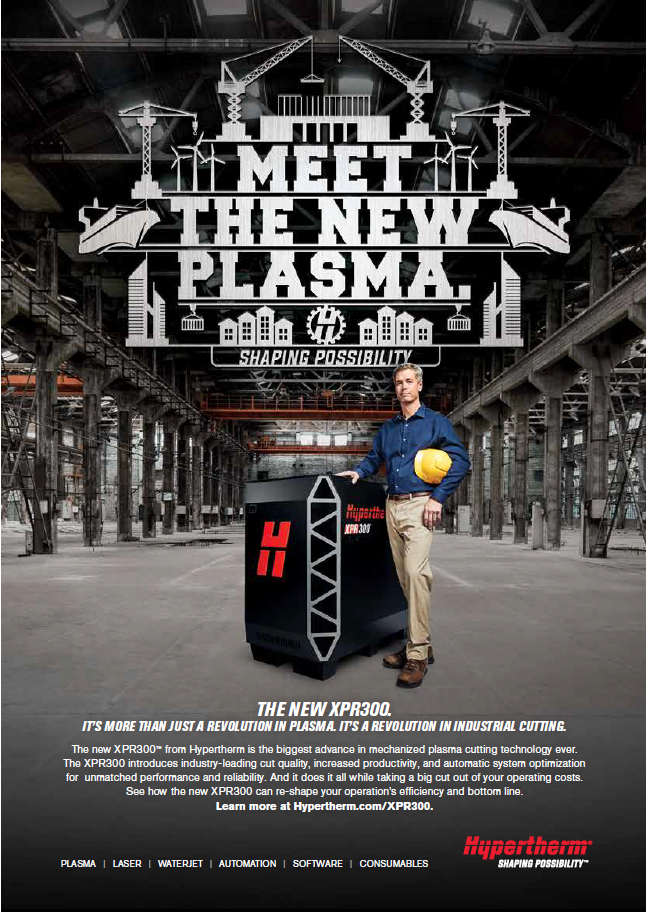Once a chainsaw, now a scalpel
Within the fabrication world, plasma cutting is a staple tool. It’s fast and relatively inexpensive, but it hasn’t always been the first choice where extreme precision is required. Almost anyone you ask will tell you that the angularity present in a plasma cut rules it out when a client needs an absolutely square edge.
But is that really still the case?
Thanks to an innovative technology called X-DefinitionTM, many fabricators have begun to reevaluate what plasma is capable of and as a result, plasma cutting is enjoying something of a global renaissance.
WHO IS HYPERTHERM?
X-Definition is the brainchild of Hypertherm, an industrial cutting solutions company headquartered in the USA. From humble beginnings in a double garage, it’s grown into a multinational with a presence in more than 60 countries.
Over the last five decades, Hypertherm has been responsible for a large number of advances in the field and currently it holds over 160 patents relating to cutting technology. Hypertherm does not simply manufacture cutting products; it actively invests in the development of new techniques and innovative equipment.
It’s an extremely unusual company, in that it is 100% owned by the associates who work for it. That manifests in an extraordinary customer service experience, because everyone you interact with at Hypertherm cares deeply about the solutions they offer.
A LEAP FORWARD
 X-Definition is an entirely new class of plasma that performs in ways not previously possible with plasma technology.
X-Definition is an entirely new class of plasma that performs in ways not previously possible with plasma technology.
It’s available in a 300 amp system called XPR300TM, which was recently demoed in partnership with CNC Clearcut at the Machine Tools Africa trade show.
The XPR300 challenges common perceptions about what kind of cuts are possible with plasma. A raftload of patent pending technologies are behind the results it produces, but the key features that make it such a game changer fall into
three categories.
• SQUARE CUTS
Unlike any other plasma cutter, the XPR300 produces a crisp, precise edge with remarkably low angularity. This makes it possible to use plasma for a wide range of work that is currently done with far more expensive laser technology.
• BLISTERING SPEED
Plasma has always offered a fairly brisk cut, but the XPR300 pushes that further, with 15% faster performance over other platforms. And it’s not just the cut that’s quick. The system’s streamlined design allows a spent consumable to be rapidly swapped out by an operator using just one hand – so downtime is reduced, too.
• LOW OPERATION COST
X-Definition plasma consumables last for an unprecedented amount of time. Using a 20-second cut as a benchmark, an XPR300 will perform in excess of 1,200 cuts of consistent quality on the same consumable.
PERFORMANCE ON STAINLESS STEEL
X-Definition performs well on a range of materials, including mild steel and aluminium, but its results on stainless steel are remarkable. It will pierce to a depth of 38mm and has a severance capacity of 75mm.
Cutting thin stainless steel requires a highly constricted low-current arc. In older plasma cutters, this would often result in an irregular cut surface. But part of the X-Definition system is a plasma dampening chamber in the nozzle, which completely eliminates the wavy edge appearance you might expect.
That’s not the only cosmetic trick the XPR300 has up its sleeve. Using a system called Vent-to-Shield, it sucks up vented plasma gas and mixes it with the shield gas. This is part of how it achieves such low angularity, but doing so also offers a more consistent edge colour on stainless steels.
WHY XPR300
 There are many arguments that can be made for using the XPR300 to cut stainless steels. Lower running cost is a strong contender: its consumables last much longer than other plasma cutters and are easier to swap out.
There are many arguments that can be made for using the XPR300 to cut stainless steels. Lower running cost is a strong contender: its consumables last much longer than other plasma cutters and are easier to swap out.
Safety is another – the XPR300 features smart technology that monitors the state of the arc, ramping down power in a controlled manner that prevents blowouts and extends the life of consumables. peed and quality are undeniable, too. But the argument that makes most sense is actually much simpler: it’s the right tool for the job.
The trend towards fibre laser cutting didn’t come about because laser was cheaper (objectively, it isn’t). It happened because at the time, plasma couldn’t offer the edge quality that customers needed. Fabricators were forced to choose between the operational efficiency of plasma and the power and quality of laser.
But with the advent of X-Definition technology, plasma is once again a viable, effective choice. It won’t replace a laser, but what it offers is a faster, more efficient way of working in a range of applications where use of a laser is an expensive overkill.


